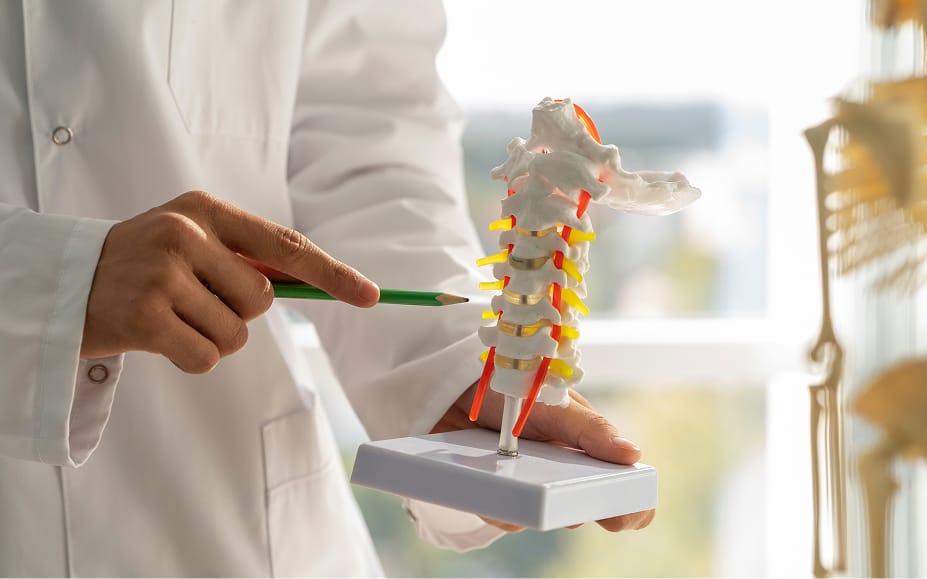
This is a bit of an oversimplification, but the crust of diagnosing a patient’s neck or back pain comes down to three causes. Neck or back pain may be caused by three basic conditions, it may be discogenic (due to the intravertebral disc’s), spinal (such as from spinal stenosis),, or vertebrogenic (due to bone or joint structures). The physician must determine if the pain is caused from disc disease, spinal stenosis or a joint arthropathy.
Most people are familiar with spinal disc abnormalities, the two most familiar being degenerative disc disease and disc herniations. Classic teaching states that a disc herniation will press on a nerve, in the neck causing arm pain and in the back causing leg pain. Spinal conditions can produce the similar albeit be less specific symptoms causing generalized arm or leg pain.
People are less familiar with vertebrogenic disorders of the spine most commonly facet and sacroiliac joint disease. Presenting signs of pain from these conditions usually involve localize neck or back pain without any on my leg pain. However studies have shown that pain from the structures can “shoot” to various areas such as, from the cervical region, to the shoulders and upper arms, and from the lumbar region, to the back, hips and upper legs. However, I in my 20 years of experience, I have seen patients with these conditions present with pain throughout their arms or down their leg. Certainly, some patients do you have classic findings, but others do not fit into this neat box and are in the so-called gray zone. thereby an appropriate diagnostic work up is necessary.
A good pain specialist will therefore utilize nerve blocks to figure out what is causing the pain. The problem I have found is many physicians do you not know the signs and symptoms of these conditions, do not do look for this condition, or simply do not do a good enough physical examination to find this condition. It is not difficult, but I still find many patients get the wrong diagnosis and wrong treatment plan. A diagnostic nerve block takes five minutes and with light sedation is relatively painless. If the diagnosis is correct, and the block is performed appropriately, the patient should experience a temporary but significant reduction in the pain. At times however, long term benefit will occur. However, if the pain is returns, a repeat treatment is done for confirmation.
Permanent benefit can then be achieved with radiofrequency ablation. This is a treatment whereby the nerve is destroyed and/or the joint is heated using fine tipped insulated needle. It has two-fold effectiveness, by achieving long-term pain relief by ablating the nerve, and also by reducing inflammation within the joint. I have cured many patients with neck or back pain with this therapy.
In conclusion, neck or back pain may be caused by three basic conditions. It may be discogenic, spinal, or vertebrogenic. The latter are very common but also commonly missed as causes of neck and back pain. A skilled intervention pain physician should be well-versed in the signs and symptoms of these conditions. This is very important both to avoid undergoing the wrong treatment or excessive treatment, and due to the fact that facet disease can be very responsive to treatment. I have successfully relieved the pain of thousands of patients who have had neck and back pain with this minimally invasive therapy.

